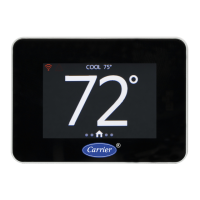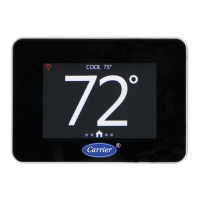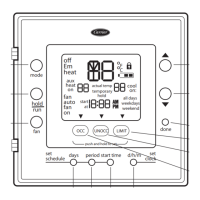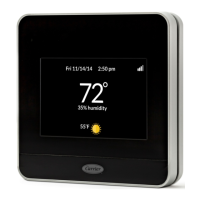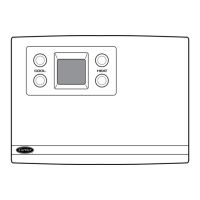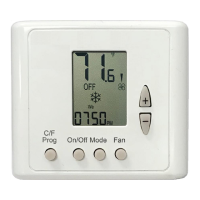NET GP OB MODE—Select the Network General Purpose Output OB mode for control over
the BACnet network. Setting the mode to OFF (disabled) sets the Present Value of the
BACnet object.
Setting the mode to:
• OFF (disabled) sets the Present Value of the BACnet object to inactive and read-only
and the corresponding output relay will be in a de-energized state.
• ACTV (energized active) allows BACnet writes to the Present Value and energizes the
output relay when the Present Value is active.
• INAC (energized inactive) allows BACnet writes to the Present Value and energizes
the output relay when the Present Value is inactive. If a Network General Purpose
Output timeout occurs, the Present Value goes to the inactive state and the relay is
either energized ACTV or de-energized INAC depending on the mode.
The outputs have primary assignments:
• Y3 - 3rd stage cooling
• W2 - 2nd stage heating
• OB - Heat pump reversing valve
If any of these outputs are required by the system configuration for their primary
function, they are available for optional equipment (humidifier, dehumidifier, and
occupancy output). Any output that is still available after configuring primary and optional
equipment can be made available as a BACnet network-controlled output.
This setting is not displayed if BACnet is disabled.
DISCONNECT WI-FI—Allows the installer to disconnect from the Wi-Fi network.
NOTE This setting is not displayed if the thermostat is already disconnected from the Wi-
Fi network.
If the user choses to disconnect the Wi-Fi, the control advances to the next setting since
this one should not be displayed anymore.
MAXIMUM SETPOINT ERROR—Select the number of degrees that cause an ID TEMP
RANGE HIGH or ID TEMP RANGE LOW fault between the space temperature and the heat
setpoint, if heating, or the cool setpoint, if cooling.
NOTE This value is added to the cooling setpoint or subtracted from the heating
setpoint.
INDOOR TEMP FAULT INHIBIT—Select the time delay applied to the ID TEMP RANGE
HIGH and ID TEMP RANGE LOW faults. The fault condition must be present for the
selected number of minutes for the fault to become active. This allows for recovery time
when transitioning from unoccupied to occupied periods
The top line in this screen scrolls to display ID TEMP FLT INHIBIT.
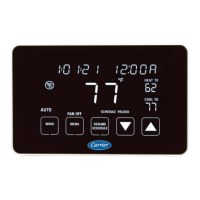
